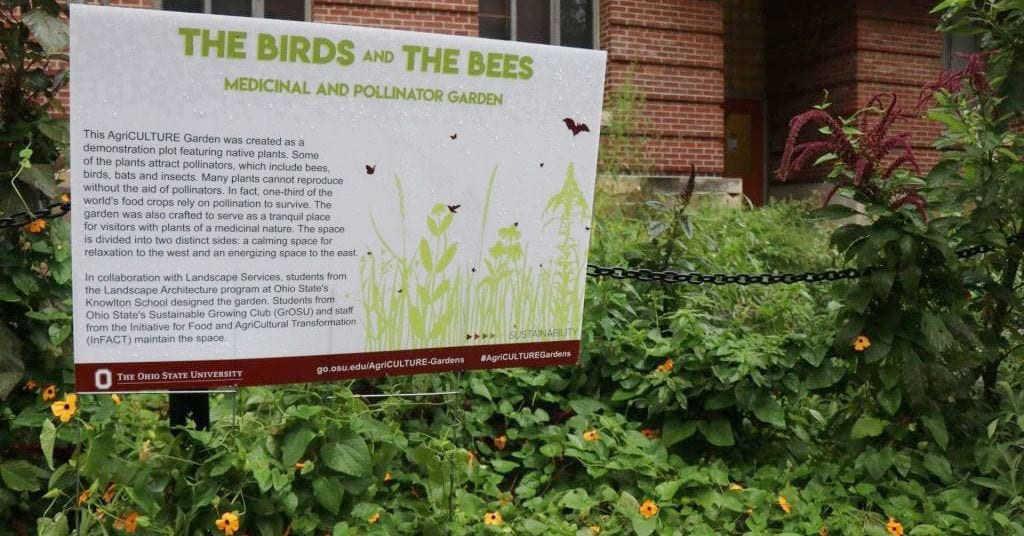
The garden outside Smith Lab on 18th Avenue will attract pollinators while also growing plants for medicinal use. Credit: Casey Cascaldo | Photo Editor
Students walking down 18th Avenue this semester might have noticed certain patches of grass seemingly have been left to their own devices. But fear not, it’s all according to plan.
The untamed wildlife is part of a pollinator and medicinal garden created by students from the Landscape Architecture Program outside of Smith Laboratory on 18th Avenue.
Landscape Services, along with the Department of Anthropology, Ohio State’s Sustainable
Growing Club — also known as GrOSU — and Initiative for Food and Agricultural Transformation (InFACT) made the garden possible.
The garden follows up the pop garden project from the 2017-18 school year.
Part of this year’s garden features an array of plants and grasses that attract pollinators like bees, bats, butterflies and other insects, while the other part of the garden features plants like chamomile and lemon balm that can be used for medicinal purposes, said Christina Boehm, a third-year in environmental science and part of GrOSU’s community outreach branch.
Ethan McGory, a professor in the Knowlton School of Landscape Architecture, said students in his classes, as well as those of assistant professors Halina Steiner and Tameka Sims, were assigned a project to design new gardens for the space outside of Smith Laboratory.
“When we were coming up with designs in the class, the idea was that it was some kind of productive garden, which is one of InFACT’s goals,” McGory said.
The design ideas were then voted on in an online poll by more than 400 students with the two winning ideas being combined to make one garden, said Angela Latham, program coordinator for InFACT.
Boehm said it was great to engage the student community on what they want to see in the gardens, and an added upside was the efficiency of the process.
“It’s cool — we try to get students to vote on what they wanna see in the gardens,” Boehm said.
Students can expect to see the pollinator and medicinal garden there for a few more years, and may even see it expand, McGory said.
“We’re just excited to have landscape architecture students designing a garden for campus,” McGory said. “I also just hope that [the garden is] something that students appreciate.”


